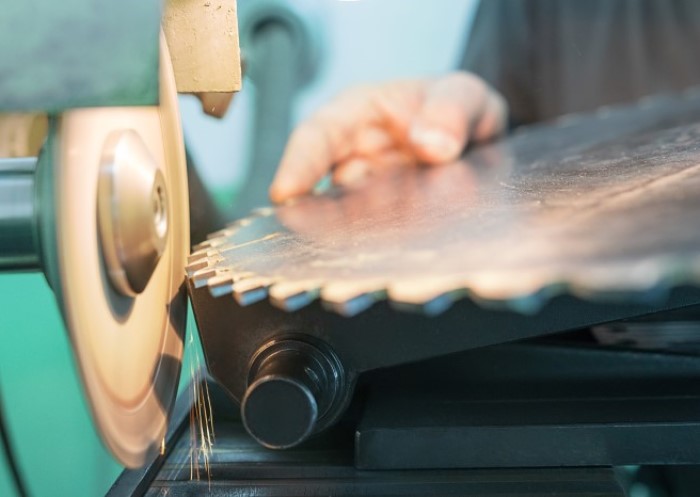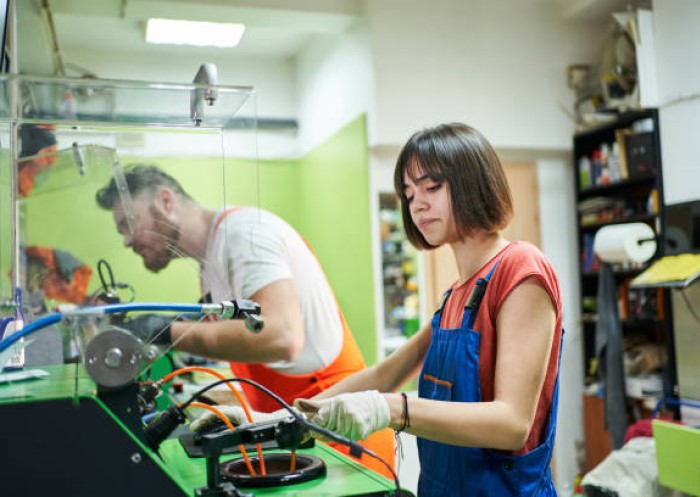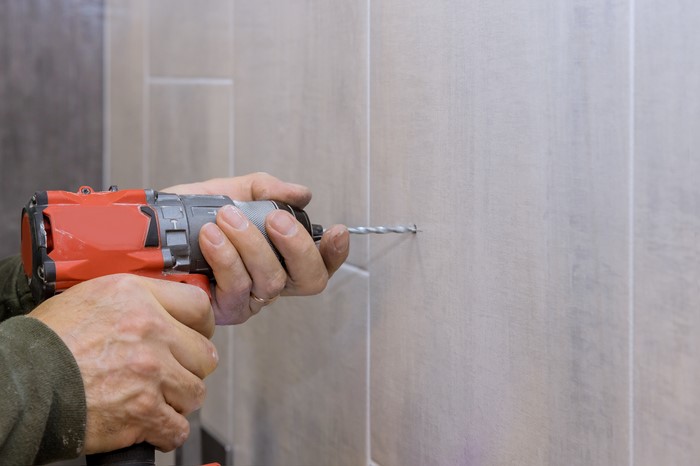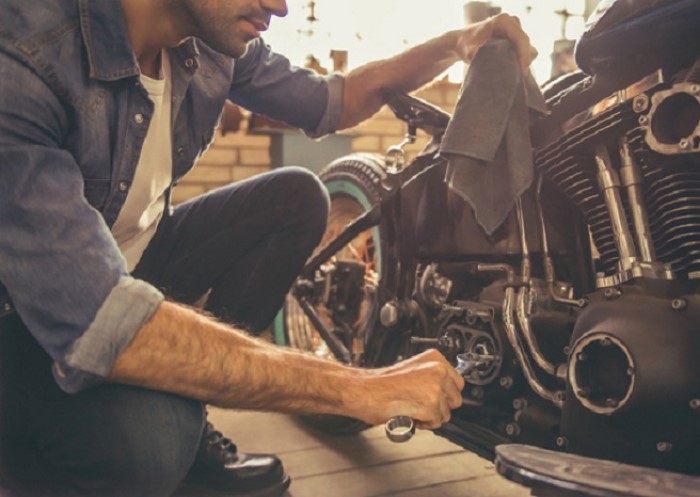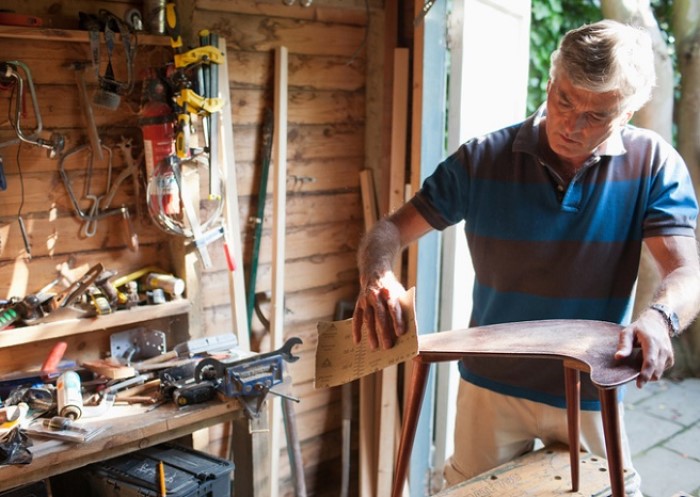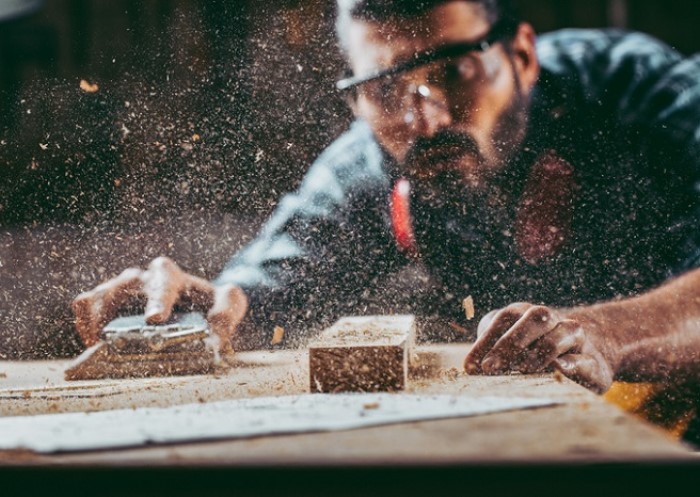Table of contents
Soldering metal is a process that can be traced back over 5,000 years. Often, it’s the preferred method of joining two or more metal components as it preserves the conductivity of the material and results in a solid joint.
There are many different types of soldering. In addition to choosing the correct technique, it is also important to know which materials and tools are most appropriate. When it comes to soldering, you might have lots of questions. What is the difference between brazing and soft soldering? You might be wondering how to use solder paste and how to solder different materials. This guide will answer these commonly asked questions and walk you through the process of how to solder effectively.
What is soldering?
Soldering allows metal workpieces to be permanently connected together. Whether they are made of the same or different metals does not typically matter, as long as the materials are solderable. The joint is created by applying a third material, called a solder, to the edges and melting it with heat so that it forms an alloy with the respective metals. A solder typically consists of a metal alloy, which must be matched to the materials. During hardening, a material-tight bond is formed, which can only be loosened by destroying the solder (desoldering).
Soldered joints are suitable for both fine joints and larger construction. The solder joint does not restrict the current or thermal conductivity, making it suitable for electrical wiring. Unlike welding processes, the working temperature remains below 1,000 degrees Celsius. The solder joint can be removed, if necessary, unlike a weld seam. Due to these advantages, soldering is used in a wide variety of applications.
- Electronics and electrical engineering: Here, various soldering processes can be employed to connect electrical components and conductors on a circuit board, as well as joining electrical cabling.
- Installation technology: How do you solder brass or copper without melting the underlying structure? Braze soldering is commonly used as a method of joining that protects the base materials. This soldering process is often applied for connecting guttering or copper pipes.
- Vehicle and body construction: One of the main advantages of soldering over welding is that the base material does not deform thanks to the relatively low operating temperature. This makes it the preferred method for dimensionally accurate and load-bearing connections.
Soldered joints do not come close to the strength of welded joints. However, there are many applications where maximum load-bearing capacity is not a priority. Soldering might also be the only appropriate process for base materials that are susceptible to damage under high temperatures. Typical soldering processes are often less labour-intensive and more cost-effective than welding.
Which materials can be soldered?
With a few exceptions, traditional soldering processes are limited to metals and metal alloys. Glass and ceramics can also be soldered, but the methods differ and require special equipment. There are also some metals for which this method of bonding does not work or only works under certain conditions.
The best materials for soldering are iron and steel, precious metals, nickel, and its alloys, as well as copper and copper alloys such as bronze or brass. It is far more difficult to solder aluminium, tin, zinc, or stainless steel. Here you need to be careful to select special solders and fluxes and take extra care when working to create a stable and conductive connection. Incidentally, among the light metals, only aluminium (including its alloys) can be soldered.
Soldering processes: brazing and soft soldering
The higher the temperatures generated during the soldering processes, the stronger and more resilient the soldered connection will be afterwards. On this basis, a distinction is made between two common methods:
- In soft soldering, the temperature reached is between 180 and 250 degrees Celsius. This method is mainly used for punctual connections with soldering irons (read on if you want the answer to the question, “How do I use a soldering iron?”) or soldering guns in electrical engineering. No high temperature is required for soldering on a circuit board, as the components are usually not under mechanical stress. Special requirements for corrosion protection (for example, in drinking water pipes) can also make soft soldering the preferred process.
- Brazing, or hard soldering, uses highertemperatures, typically between 450 to 900 degrees Celsius. This requires special soldering torches and brazing alloys, which can be used to create robust connections over large surface areas. Industries typically employ this process in applications where higher load bearing is required. Due to the high temperatures, special fire protection regulations must be observed.
Soft and hard soldering therefore differ not only in working temperature and strength but also in the equipment needed to solder properly.
Selecting the right solder and solder flux
In soft soldering, the alloy used is typically largely made from tin. Other incorporated substances can include lead, copper, or silver. Brazing alloys, on the other hand, are mainly made of brass or silver. The melting behaviour is determined by which substances are included and in what quantities. It is important that you always choose a solder with a melting point below that of the metal workpieces.
Lead-based solder was once popular due to its easy production. However, strict regulations on heavy metals, prompted by the health and environmental hazards associated with them, have phased out the use of lead-based solder.
Solder is typically used in the form of solder wire or as a solder paste, and occasionally in rod form. It contains a flux, usually rosin which facilitates the distribution of the solder and prevents oxidation of the solder joint. If you are using solder without a flux core, you will also need to use soldering water (for soft soldering) or brazing paste to support uniform flow.
Finding the right tools
Learning how to solder includes understanding which soldering device to use for a given application. The decisive factors are which soldering process you choose, the type of joint you want to make, and the sorts of stress the product will come under.
- Soldering irons and soldering guns are suitable for soft soldering. They consist of a soldering tip and an insulated handle. The power supply is usually via a cable or a built-in battery. If you need to work without electricity, there are also models available with a gas tank. Both devices are available in different power levels (from 15 to 100 watts, for example). In contrast to a soldering iron, a soldering gun reaches its operating temperature after just a few seconds and is therefore better suited for spontaneous and short applications (e.g. repairs), while a soldering iron performs better in continuous use.
- Soldering stations are also designed for soft soldering but offer much more flexibility while working. They include a soldering iron with replaceable soldering tips and electronic temperature control. The desired temperature is pre-set and automatically regulated during the work process. In this way, the optimal conditions for soldering are guaranteed.
- Blowtorches are commonly used for brazing. These are powerful gas burners capable of reaching working temperatures of up to 1,800 degrees Celsius. When used properly, they are particularly suitable for soldering larger surfaces. However, only use a blowtorch with great caution and if you have prior experience.
The soldering process: step-by-step instructions
How do you solder effectively? Find out in our step-by-step guide:
- Clean thoroughly before soldering
 All work materials, as well as the soldering tip, must be free of oil, grease, and oxidation residues. Use metal wool or a damp sponge for the soldering tip and clean everything thoroughly.
All work materials, as well as the soldering tip, must be free of oil, grease, and oxidation residues. Use metal wool or a damp sponge for the soldering tip and clean everything thoroughly. - Wear protective equipment
 High temperatures, sparks, and fumes increase the risk of accidents and injuries during soldering. Protect the workplace with a fireproof surface and protect your eyes from flying sparks with safety glasses. A respirator will stop potentially hazardous fumes from entering your lungs. If you have to add the flux yourself, you should also wear protective gloves.
High temperatures, sparks, and fumes increase the risk of accidents and injuries during soldering. Protect the workplace with a fireproof surface and protect your eyes from flying sparks with safety glasses. A respirator will stop potentially hazardous fumes from entering your lungs. If you have to add the flux yourself, you should also wear protective gloves. - Preheat the soldering device
 Turn on the soldering iron and place it on a safe surface until it reaches the required operating temperature. With soldering guns, this step is not necessary as you only need a few seconds.
Turn on the soldering iron and place it on a safe surface until it reaches the required operating temperature. With soldering guns, this step is not necessary as you only need a few seconds. - Position metal pieces
 Place the components in a safe position that will not need to be altered until after they cool down. Cables can be twisted together ready for soldering, components plugged into a circuit board, or pipes screwed together.
Place the components in a safe position that will not need to be altered until after they cool down. Cables can be twisted together ready for soldering, components plugged into a circuit board, or pipes screwed together.
A small distance of between 0.2 and 0.4mm should be left between components so that a capillary effect is created and the solder can penetrate properly. - Heat the solder joint
 Now heat the solder joint by holding the soldering iron directly against the joint for about two seconds.
Now heat the solder joint by holding the soldering iron directly against the joint for about two seconds.
If you are using a blowtorch (if you are wondering how to solder copper pipe, a blowtorch is the most effective way) you will need to hold the torch under the pipes. This makes it easier to heat them evenly, as warm air rises to the top. - Wet the solder joint
 Now add solder to the solder joint and heat it again for about two seconds with the soldering iron or blowtorch. It should melt immediately and run evenly.
Now add solder to the solder joint and heat it again for about two seconds with the soldering iron or blowtorch. It should melt immediately and run evenly.
After four to six seconds at the most, you must remove the soldering tip from the solder joint. Otherwise, there is a risk that components will be damaged and the conductivity impaired. - Allow the solder joint to dry
 Now all you have to do is wait for the solder to cool and harden completely. Depending on the operating temperature, this can take several hours. Avoid any vibration or movement of the components during this time.
Now all you have to do is wait for the solder to cool and harden completely. Depending on the operating temperature, this can take several hours. Avoid any vibration or movement of the components during this time.
How do you know if the soldering process was a success?
If you are still learning how to solder, it can sometimes be difficult to assess whether a solder joint has really been made. Look out for:
- A flat and even surface
- Metallic shine (dull with lead-free solder)
- Contact edges that are fully coated in solder.
In electrical engineering, errors are noticeable at the latest when the current does not flow (sufficiently). In this case, you have what is referred to as a cold solder joint. This often occurs when the solder was added to the joint too early in the soldering process or the iron had not yet reached its operating temperature. Using too much solder or moving the components before curing can also lead to faulty solder joints.
The best solution in this case is desoldering. The old solder is heated and removed with the help of a desoldering device, braid, or a suction pump and the area is then completely re-soldered. The process is used not only for faults but also for the replacement of defective components.
FAQ on soldering processes
• In soft soldering, the temperature is between 180 and 250 degrees Celsius. It is mainly used with soldering irons for connecting components on circuit boards during electrical engineering.
• During brazing, or hard soldering, a temperature of 450 to 900 degrees Celsius is reached. This requires special soldering torches and so-called brazing alloys, which can be used to create robust, large-area connections. Due to the high temperatures, special fire protection regulations must also be observed.
Iron and steel materials, precious metals, nickel, and its alloys, as well as copper and copper alloys such as bronze or brass, are all good soldering metals.
It is far more difficult to solder aluminium, tin, zinc, or stainless steel. Here you need to be careful to select the right solders and fluxes and take extra care when working to create a stable and conductive connection. Incidentally, among the light metals, only aluminium can be soldered.
A successful solder joint should ideally feature:
• An even surface
• A metallic shine (dull with lead-free solder)
• Complete coverage over the connecting edges.
Desoldering involves heating the old or defective solder, removing it with the help of desoldering devices, desoldering wires or a desoldering suction pump, and then completely resoldering the area. The process is used not only for faults, but also for the replacement of defective components.
Image source:
© gettyimages.de – wattanaphob















